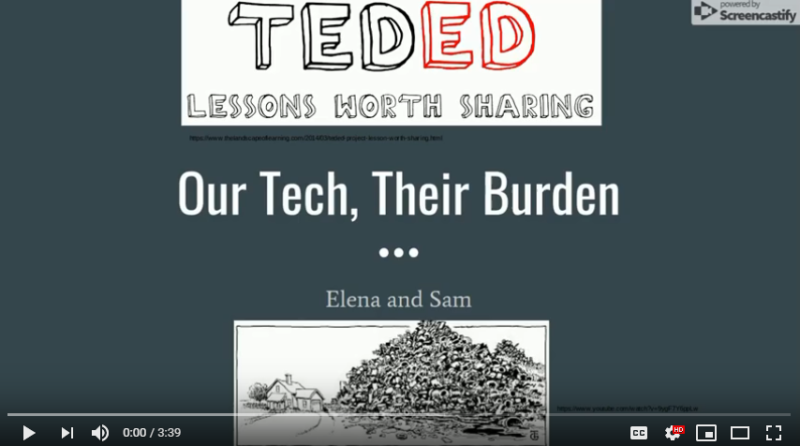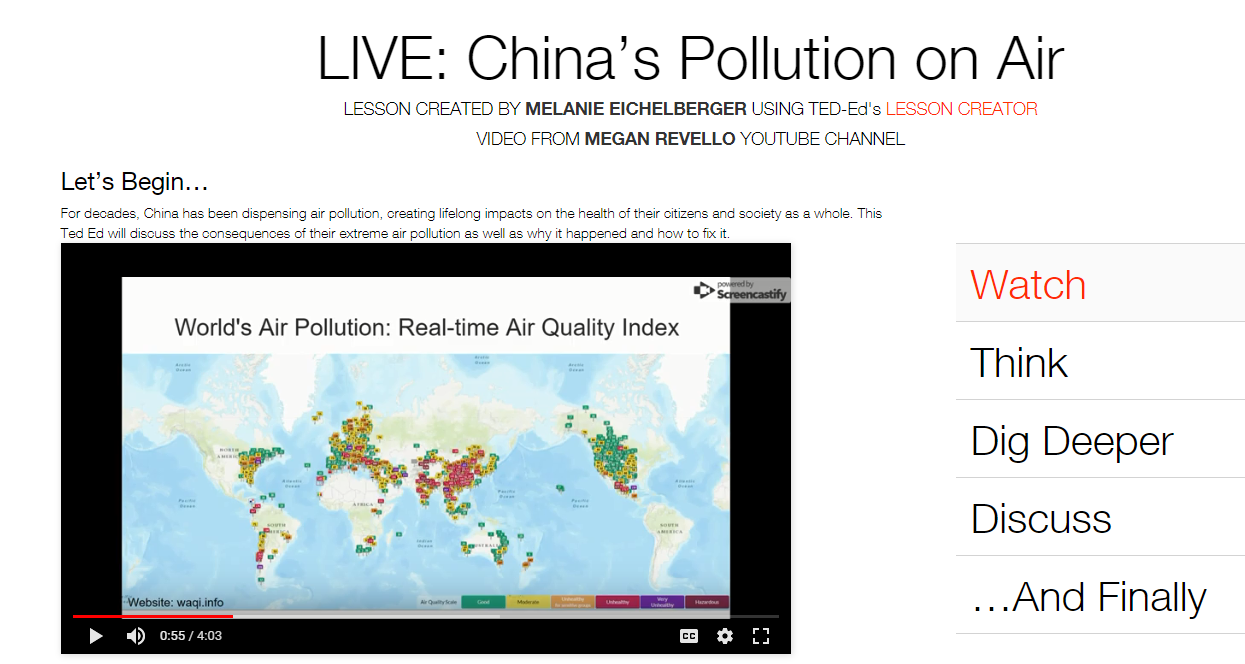Three years ago I was desperate for a change. The final project for my elective class had fizzled and I had recently come to the conclusion that high school seniors (especially second semester) are some of the most fun, and most frustrating, students I have ever taught. They’re excited, a joy to talk to, and the whole world is at their feet, ready to be discovered. But they also hit a wall at some point during the year. Maybe it’s after college applications are completed, or after winter break or after their future plans are officially decided, but they all hit that wall. That wall was what I needed to help them overcome. In my search for something new, I hit the jackpot when I stumbled upon the KQED article The Student-Produced TED-Ed Lesson: A Lesson Worth Sharing?
In the article, high school teacher Peter Paccone detailed how he utilized the creation of TED-Ed lessons in his history classes. After reading his article, I decided to try it out as a final assessment for my seniors in our social studies elective, Issues in Global Development. In this course, students study developmental issues such as human rights violations, overpopulation, globalization and more. Creating a TED-Ed lesson would allow them to dive deeply into a topic that intrigues them.
The first time I ran the project, I enjoyed the freedom and choice students had in completing the video. It was a chance to really let their creative sides shine! Students ended up researching, writing and recording over a span of several weeks which seemed like ample time to complete a quality project. However, I was initially left a bit disappointed in the overall results. Not ready to give up on the project, which seemed so promising, I have subsequently made minor changes over the course of the four semesters my students have completed it. Through trial and error, I have found what makes the TED-Ed an effective tool for student engagement and learning.
Focus
A TED-Ed video is typically an introduction to a topic that is 5 minutes or less. Given the broad nature of topics discussed in my class (child mortality, human trafficking, etc.) students often need help paring down these broad issues into something manageable. This is an important first step. For example, a student may tell me they are interested in researching the environmental impacts of pollution on developing countries. This is a huge topic. Instead, through questioning the student we can narrow it down to a place in the world (e.g., India) and further consolidate to a specific aspect of pollution like international companies dumping toxic waste. This topic—Industrial Waste in India—is much more manageable for students to research and present on.
Structure
A project that has so much choice attached to it also needs structure built in. This may seem counterintuitive, but it is imperative for students of all ages and ability levels. Instead of handing students a copy of the assignment and expecting them to produce a quality final video, this project requires a variety of guided steps which can be easily completed via a template. Students must first have a broad understanding of their topic and complete a basic summary or overview. Once they have demonstrated a basic level of understanding, they can dive deeper into more specific, content-driven research while creating a script for their talk. Finally, they produce the talk itself which incorporates visuals with the script in a summative video. By encouraging these concrete steps students are still free to explore their interests, but in a manageable and developmentally appropriate way.


